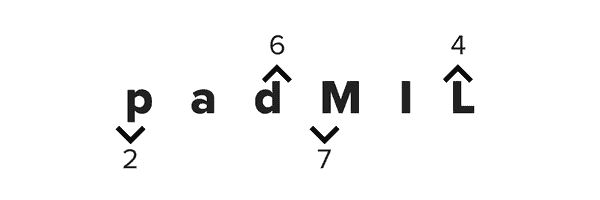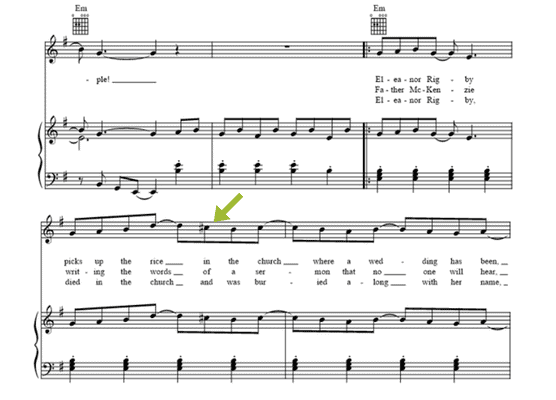Guide to Musical Modes | Tips and Tricks For Memorization
Learning musical modes can seem confusing and overwhelming; however, with our memorization tips & tricks guide, you’ll master them in no time!

Modes in music can be confusing. However, with just a little memorization you can master them easily. They are a fun way to expand your musical horizons and will enable you to try new sounds as a composer and performer. We want to help you on your modal journey, so here are a few different ways you can memorize and master your modes.
What are Modes?
Note that the modes we are discussing here refer to the Western church modes that evolved in the 6th and 7th centuries. There are countless other non-Western modes found around the world.
A mode is a type of musical scale A mode is a type of musical scale coupled with a set of characteristic melodic behaviors. There are 6 modes that are used regularly, and 1 more that’s still important to know.
Two of the modes are natural diatonic scales:
- Ionian (Natural Major Scale)
- Aeolian (Natural Minor Scale)
The rest sound like diatonic scales with some added accidentals here and there. The remaining commonly used modes are:
- Phrygian
- Dorian
- Mixolydian
- Lydian
A less commonly used mode is:
- Locrian
Three Memorization Methods
1. The White Keys
Each mode can be associated with a coordinating white key scale. Many people are taught modes this way because it’s a great way to visualize each mode. If this method makes the most sense to you and you can easily apply it to using modes in every key signature, then you’re good to go! But as we mentioned before, each mode has its own pattern of half steps and whole steps, and with this memorization method, it’s hard to pinpoint those characteristics. You might have better luck memorizing the rules.

2. The Rules
Each mode has it’s own set of rules, and if you memorize these rules, you’ll be able to easily use modes in other key signatures. Let’s start with the 6 most common modes:
Ionian – Major Scale
Lydian – Major Scale with a raised 4th scale degree
Mixolydian – Major Scale with a lowered 7th scale degree
Aeolian – Minor Scale
Phrygian – Minor Scale with a lowered 2nd scale degree
Dorian – Minor Scale with a raised 6th scale degree
So let’s say you are trying to write a Dorian scale starting on middle C. First, write out a C Minor scale.

Now, raise the 6th scale degree, and you have a C Dorian scale!

Now, we haven’t forgotten about Locrian mode, but we’ve saved it for last because it has a little extra pizzazz!
The Locrian mode is a minor scale with a lowered 2nd scale degree and a lowered 5th scale degree.
Let’s use C Minor as an example again. Here is the natural scale:

Now let’s lower the 2nd scale degree and the 5th scale degree to get a C Locrian Scale:

If you play this scale, you’ll notice it sounds pretty funky! Consequently, we see it used less than the other 6 modes.
3. padMIL
We’re giving you a handy acronym for the last memorization method! “PadMIL” with the corresponding numbers is an easy shortcut for remembering the modes. Our brains love acronyms, and it’s especially great if you’re a music theory student and need to write out a key on your homework and tests!
Each letter indicates a different mode:
p = Phrygian
a = Aeolian
d = Dorian
M = Mixolydian
I = Ionian
L = Lydian

- The lowercase letters indicate a minor scale
- The uppercase letters indicate a major scale
- The numbers indicate which scale degree moves
- The arrow indicates the direction in which the scale degree moves

You may have noticed that the Locrian mode isn’t listed in this acronym. That’s because, as we mentioned earlier, it’s not as common as the other modes. And because of it’s extra alteration, there is no fancy shortcut—just your awesome brainpower!
Application
Why is it important to know your modes?
- Modes give you a better understanding of music theory. Basically, the history of Western music is the history of the modes. The earliest notated music, such as Gregorian chant, used these modes. As time moved on a preference for Ionian and Aeolian grew and eventually the Western major and minor scales became codified. Learning your modes and working with them gives you a stronger foundation in the roots of your art form.
- Modes allow for fresh ideas and compositions from aspiring songwriters. Modes can be the tonality of an entire piece, a small section of a larger song, or give you the shape of a melody. They can add more interest to your musical ideas.
- Modes show up in a lot of popular music. Pink Floyd was known to play with the Phrygian mode. The Dorian mode has been used by many songwriters including Carole King.
The Beatles also loved to play with modes. Check out “Eleanor Rigby.” Notice that there is a C# in the midst of E Minor. That’s a raised 6th scale degree, which means this is actually Dorian mode!

In addition, a lot of improvising happens with the modes. Jazz musicians jam with the modes all the time. Good rock guitarists know their modes, too, as the modes provide excellent material for those soaring riffs and solos we all love to hear. Do you want to take your playing to the next level? Learn your musical modes.
There you have it! We hope these tips and tricks helped clarify why understanding modes in music is important. But practice does make perfect, so take some time this week in your practice session to check out Musicnotes for sheet music and experiment with modes. Happy discovering!
FAQ
- Are modes and scales the same? Yes and no. When we refer to scales, we typically refer to the major and minor scales that are most commonly used in Western music today. The Western major scale is the Ionian mode. The Western minor scale in its natural form is the Aeolian mode. So those modes and scales are identical. However, there are five additional Western church modes that are not the same as our major and minor scales. They stand on their own and have no modern equivalent. Also, remember that there are non-Western modes used in other parts of the world such as Asia and the Middle East. They also have no equivalent in Western scales. So you might say that two of the modes and our modern scales are the same. The rest are additional, wonderful creative materials for you to play with.
- Which modes go with chords? Any modes can go with chords. In fact, deciding upon chords is one of the things that makes playing with modes so much fun. Because five of the Western church modes have a different pattern than our modern scales, putting chords with some of the tones can get interesting. They may sound like a bad fit. Remember that music doesn’t always have to be consonant and is more interesting if dissonance interplays with consonance. So embrace the unusual sounds that may result in pairing chords with modes and experiment with the possibilities.


